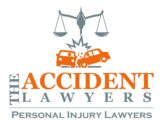In the aftermath of a car crash in Alberta, victims often face not only physical injuries but also significant pain and suffering. Proving pain and suffering in a personal injury case can be challenging, but it is crucial for obtaining fair compensation. This blog provides insights into how you can substantiate your claims under Alberta law, with the help of a personal injury lawyer in Calgary or Edmonton.
Understanding Pain and Suffering
Pain and suffering refer to the physical discomfort and emotional distress a victim endures due to an injury. This can include chronic pain, anxiety, depression, and a diminished quality of life. Unlike tangible medical bills or lost wages, pain and suffering are subjective and require substantial evidence to be proven.
Legal Considerations in Alberta
In Alberta, the compensation for pain and suffering is governed by the Minor Injury Regulation and the Insurance Act. The regulation places a cap on the amount that can be awarded for minor injuries, which are defined as sprains, strains, and certain types of whiplash. However, severe injuries can warrant higher compensation. Consulting a personal injury lawyer can help you navigate these regulations effectively.
Proving Pain and Suffering
Medical Documentation:
-
- Medical Records: Comprehensive medical records are crucial. Ensure that all treatments, diagnoses, and ongoing medical issues are thoroughly documented.
- Doctor’s Testimony: A detailed statement from your physician about the extent of your injuries and the expected recovery time can strengthen your case.
Personal Testimony:
-
-
- Daily Journal: Maintain a diary detailing your pain levels, emotional state, and the impact of the injury on your daily activities. This personal account provides a real-time perspective on your suffering.
- Statements from Family and Friends: Testimonies from those close to you can corroborate your claims about how the injury has affected your life.
-
Expert Testimony:
-
- Medical Experts: Testimonies from medical experts who can explain the nature of your injuries and the expected long-term effects can be persuasive.
- Psychologists: If your injury has led to mental health issues, statements from psychologists or therapists can be essential.
Visual Evidence:
-
- Photographs and Videos: Visual documentation of your injuries and your daily struggles can provide compelling evidence of your suffering.
Role of a Personal Injury Lawyer
Navigating the complexities of proving pain and suffering requires legal expertise. A personal injury lawyer in Calgary or Edmonton can assist you by:
- Gathering and Presenting Evidence: Lawyers know how to collect the necessary evidence and present it effectively.
- Valuing Your Claim: They can accurately value your pain and suffering based on legal precedents and the specifics of your case.
- Negotiating with Insurance Companies: Lawyers can handle negotiations with insurance companies to ensure you receive fair compensation.
Conclusion
Proving pain and suffering in a personal injury case in Alberta involves meticulous documentation and compelling evidence. Understanding the legal framework and working with a skilled personal injury lawyer in Calgary or Edmonton can significantly enhance your chances of obtaining fair compensation. If you have been injured in a car crash and need expert legal assistance, visit www.theaccidentlawyers.ca to connect with experienced professionals who can guide you through the process.
By taking these steps and seeking professional legal help, you can better navigate the complexities of your personal injury case and work towards securing the compensation you deserve for your pain and suffering.

